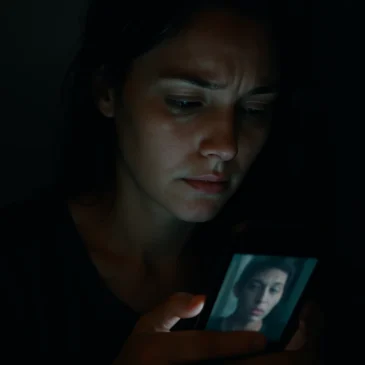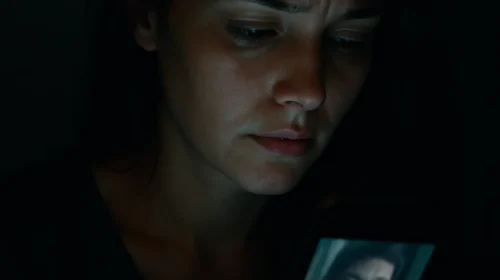It was a late-night scroll that stopped me cold.
A familiar caption.
A painfully familiar story.
And a face I knew all too well—my former best friend, Amanda—
telling the world a story that wasn’t hers to tell.
Except she *never mentioned my name*.
Never gave credit.
Just enough details to make it seem personal…
And just vague enough to pretend it wasn’t.
But it was my story.
My heartbreak.
My trauma.
And now it had 3.7 million views and counting.
—
**We Were “Those Friends”**
The kind that could finish each other’s sentences.
Send a single emoji and know what it meant.
Trade secrets like birthday gifts—wrapped in trust, never meant for public eyes.
Amanda was there when I went through the hardest season of my life:
My miscarriage.
She held my hand.
Cried with me.
Brought me soup when I couldn’t get out of bed.
She said:
> “This is between us. Always.”
I believed her.
—
**Until TikTok Told a Different Story**
It was a random Tuesday.
I opened the app, and there she was—tearfully telling a story about “a woman I know who lost a baby and was never the same.”
She described the hospital.
The exact week.
The emotional spiral.
She even mimicked my breakdown in the shower.
I sat there, frozen.
Watching strangers flood the comments with
> “You’re so brave.”
> “What a powerful story.”
> “Thank you for being so raw.”
But it wasn’t *her* bravery.
It wasn’t *her* rawness.
It was mine.
—
**What Hurt the Most**
It wasn’t the clout-chasing.
It wasn’t even the lack of credit.
It was the betrayal.
The fact that she took something sacred—something *private*—
and turned it into a viral moment.
For views.
For followers.
For sympathy that didn’t belong to her.
And when I messaged her?
She replied:
> “It’s not *your* story, it’s *our* experience. I was there too.”

**No. Just… No.**
You don’t get to use someone’s pain as a plot twist.
You don’t get to retell someone’s grief like it’s a bedtime story for likes.
You don’t get to profit off vulnerability that wasn’t yours to share.
What Amanda did wasn’t brave.
It was theft.
Emotional plagiarism wrapped in faux empowerment.
—
**How I Took Back My Voice**
I didn’t go public.
I didn’t create a revenge video.
I shared my own story—on my own terms.
With my name.
With my truth.
And with no performance.
I didn’t care about going viral.
I cared about being *real*.
And slowly, the people who mattered reached out.
To ask.
To listen.
To hold space without needing a spotlight.
—
**What I’ve Learned**
1. **Not everyone who holds your secrets honors them.**
Some see your story as content instead of connection.
2. **Going viral doesn’t equal being right.**
Authenticity isn’t always loud—but it’s lasting.
3. **You are allowed to draw a hard line around your pain.**
It is *yours*. You choose who enters that space.
—
**Final Thought**
She used my story for content—and went viral.
But no amount of likes or shares can disguise the truth:
She borrowed my grief without permission.
And that kind of betrayal doesn’t fade when the algorithm moves on.
My story is mine.
And I’ll tell it when—and if—I’m ready.
Not because it’s trending…
But because healing deserves more than hashtags.


